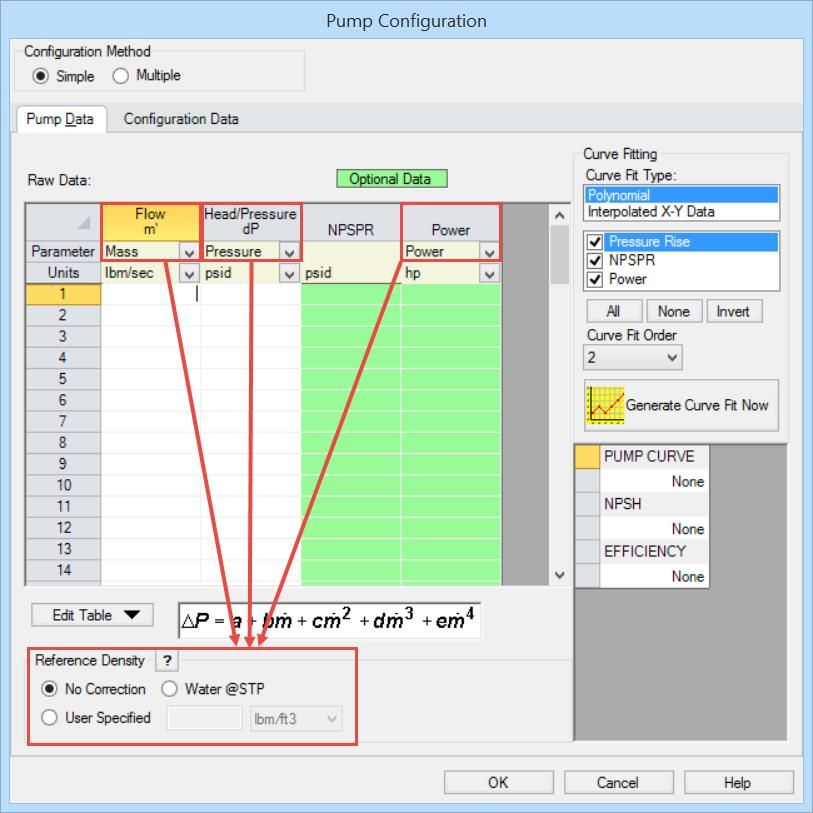AFT Blog
Reference Densities for Pump Operation
You have just received a pump curve from a manufacturer to use in modeling your piping system. However, the pump manufacturer only tested their pump with water while your system fluid has a density that is different than water. These differences need to be accounted for with your flow model as well. This may sound like a bit of a daunting task up front.
But there is good news! In AFT Fathom 8 and AFT Impulse 5, there are two very helpful features that will allow you to easily account for these differences with no trouble at all!
The pressure rise across a pump is a function of the density of the fluid, gravity, and the corresponding head rise.

However, the majority of pump curves like the one below will be provided in terms of head rise and volumetric flow rate rather than pressure rise or mass flow rate. The pump parameters in terms of head rise and volumetric flow rate are very convenient to use because they are NOT dependent upon density. Therefore, a pump curve that is given in terms of head rise and volumetric flow rate can be used for a pump that will be used to pump a fluid with any density! Here is an excellent article that further explains the difference between “head” and “pressure” for pumping systems, https://www.flowcontrolnetwork.com/instrumentation/flow-measurement/article/15561410/pump-guy-mailbag-liquid-force.

A power curve DOES depend on density and the pump curve will reference the specific density that was used to generate the brake horsepower curve, as shown above. The following equation relates the shaft power of a pump to the density, flow rate, head rise, and efficiency. Therefore, the power curve WILL need to be corrected for density differences between the test fluid and system fluid.

It is very easy to account for density differences for pump curves given in terms of Mass Flow Rate, Pressure Rise, or Power within the Pump Curve Configuration window for the Pump Model itself in AFT Fathom and AFT Impulse. As seen in the image below, if either Mass, Pressure Rise, or Power are selected from the Parameter drop-down menus, then the “Reference Density” section becomes active.

If the density differences between the test fluid and system fluid are quite small and do not significantly impact the pump performance, then “No Correction” can be chosen. But this is not advised since it is important to account for differences. Commonly, water will be used as the pump test fluid and if water at Standard Temperature and Pressure was used, then “Water @ STP” can be chosen. Finally, “User Specified” can be chosen and you would simply need to enter the density of the pump test fluid itself.
Then, AFT Fathom and AFT Impulse will account for the density differences automatically!



Comments 1
Quite a helpful information and an important correction feature introduced.
Thanks for the Information